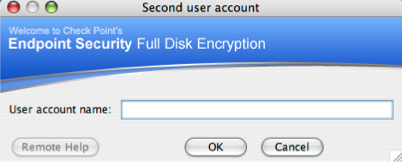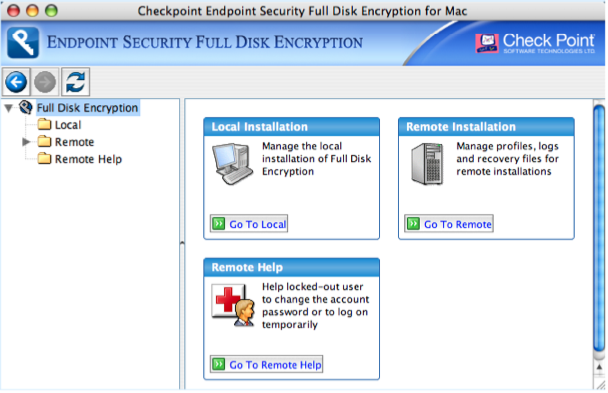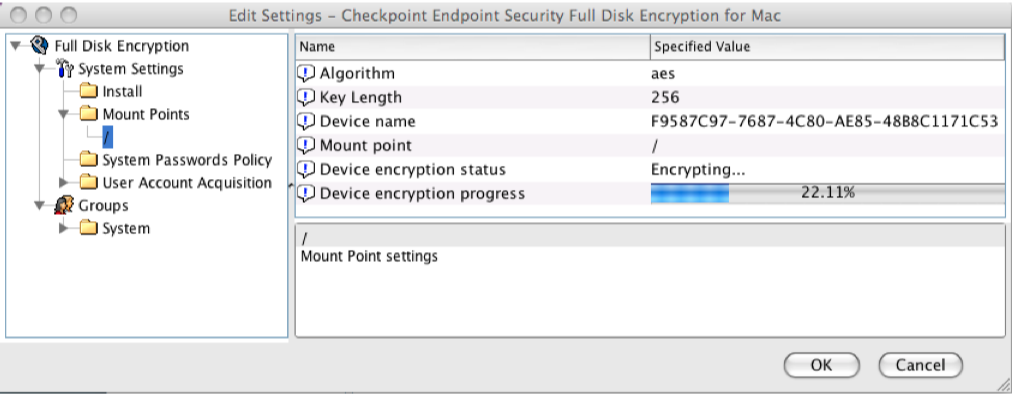This content is viewable by Everyone
How to Determine Your Computer Encryption Status
- Service Category: Security
- Owner Team: IT Desktop Engineering
Overview
Multiple methods for deploying whole-disk encryptions are used at UCSF Medical Center and UCSF Campus. The list of computer encryptions below is ordered by most to least well-used.
For additional information regarding encryption, visit our Encryption FAQs.
If you need help reviewing your system's encryption status, or if you find that your system is not encrypted, please contact our UCSF IT Service Desk.
Go to samples on this page:

 Windows - BitLocker (Microsoft)
Windows - BitLocker (Microsoft) 
 Windows - DDPE (Dell Data Protection | Enterprise Edition - Credant)
Windows - DDPE (Dell Data Protection | Enterprise Edition - Credant)
 Windows - PGP (Symantec)
Windows - PGP (Symantec)
 Windows - PointSec (Check Point Software)
Windows - PointSec (Check Point Software)
 macOS / Mac OS X - FileVault 2 (Apple)
macOS / Mac OS X - FileVault 2 (Apple) 
 macOS / Mac OS X - DEE (Dell Encryption Enterprise)
macOS / Mac OS X - DEE (Dell Encryption Enterprise)
 macOS / Mac OS X - PGP (Symantec)
macOS / Mac OS X - PGP (Symantec)
 macOS / Mac OS X - PointSec (Check Point Software)
macOS / Mac OS X - PointSec (Check Point Software)
Windows - BitLocker
- Click on the Start Menu at the bottom-left corner.
 Click on Control Panel.
Click on Control Panel. Click on BitLocker Drive Encryption.
Click on BitLocker Drive Encryption.
 Under BitLocker Drive Encryption - Hard Disk Drives, if you see the following text: Windows (C:) On, then your hard drive is encrypted.
Under BitLocker Drive Encryption - Hard Disk Drives, if you see the following text: Windows (C:) On, then your hard drive is encrypted.
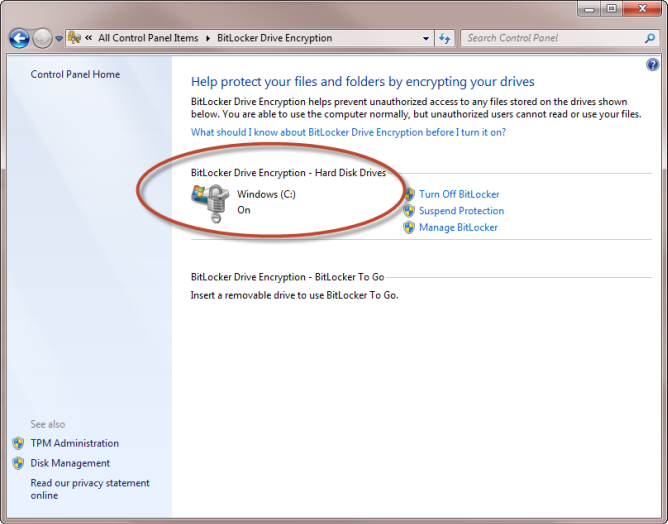
Windows - DDPE (Credant)
- Click on the Start Menu at the bottom-left corner.
 Search for Dell Data and click on it to open the Dell Data Protection Encryption application.
Search for Dell Data and click on it to open the Dell Data Protection Encryption application.
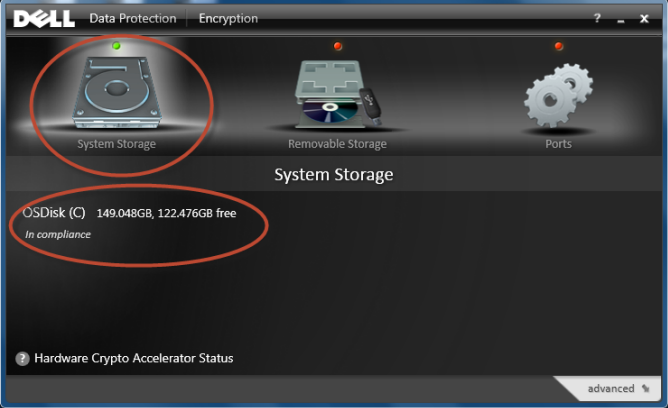 3. In the Data Protection window, click on the icon of the hard drive (aka System Storage).
3. In the Data Protection window, click on the icon of the hard drive (aka System Storage).
Under System Storage, if you see the following text: OSDisk (C) and In compliance underneath, then your hard drive is encrypted.

Windows - PGP
Update as of 7/31/20, PGP Encryption is End of Life and no longer supported as an encryption method on UCSF Managed Devices or devices connecting to the UCSF network (BYOD). Please contact the UCSF Service Desk at 415-514-4100 if you require assistance encrypting your device with a supported encryption solution.
https://knowledge.broadcom.com/external/article/152880/end-of-life-information-for-symantec-enc.html
- Click on the Start Menu at the bottom-left corner.
 Search for pgp desk and click on it to open the PGP Desktop application.
Search for pgp desk and click on it to open the PGP Desktop application.
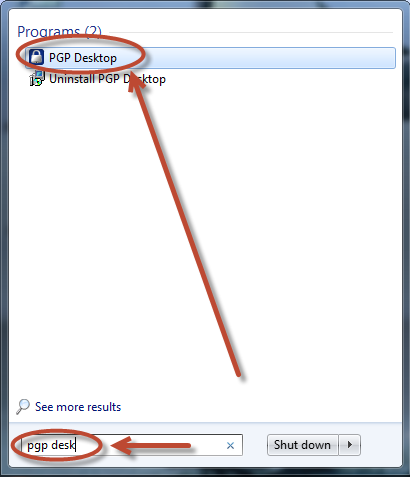
3. On the left pane, choose PGP Disk and Encrypt Whole Disk.

4. On the right, you'll see drives listed under Encrypt Whole Disk or Partition and under Select Disk.
Viewing the C: drive, if you see an icon of a silver padlock inside a blue box, then your hard drive is encrypted.
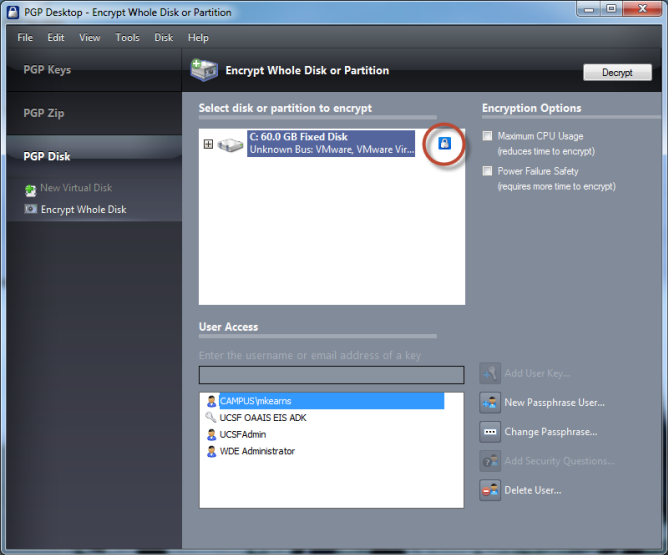
Windows - PointSec
- Click on the Start Menu at the bottom-left corner.
![]()
2. Search for Check Point Endpoint Security and click on it to open the Check Point Security application.
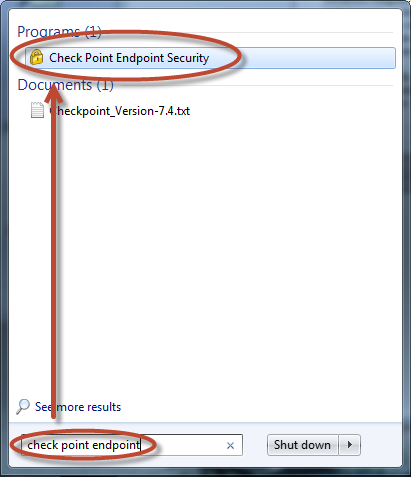
3. On the left pane, select Full Disk Encryption and Main.
Under Encryption status, if you see the text Volume C:\ Boot protection and Volume -:\ Boot protection, then your hard drive is encrypted.
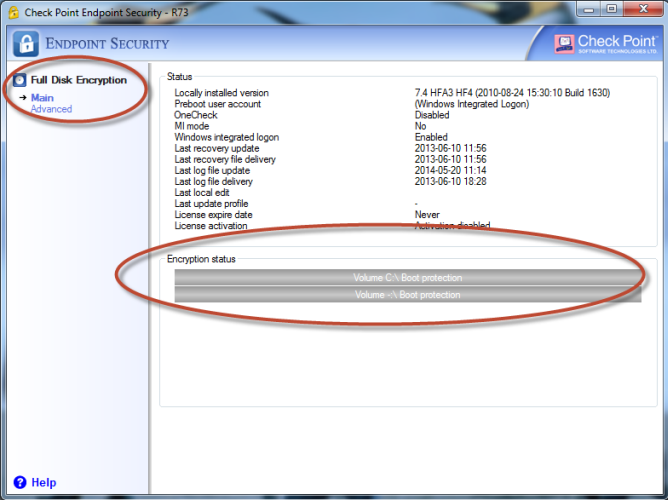
macOS / Mac OS X - FileVault 2
- Click on the Apple in the upper-left corner and go down to System Preferences.
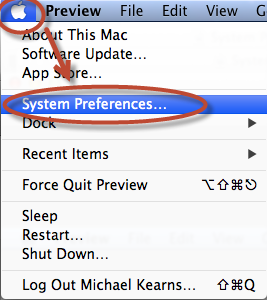 Click on Security & Privacy.
Click on Security & Privacy.
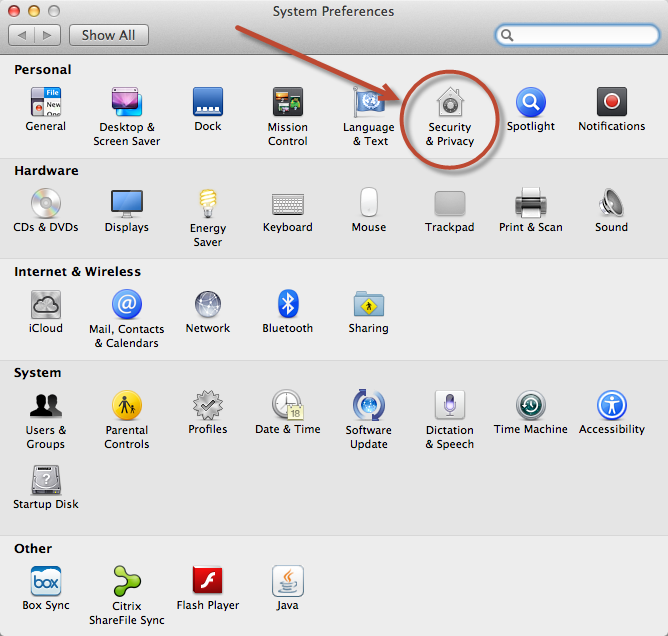
4. Click on FileVault.
Your hard drive is encrypted if you see the following text: FileVault is turned on for the disk "Macintosh HD".
Note: The name of your hard drive may vary from the "Macintosh HD" example shown here.
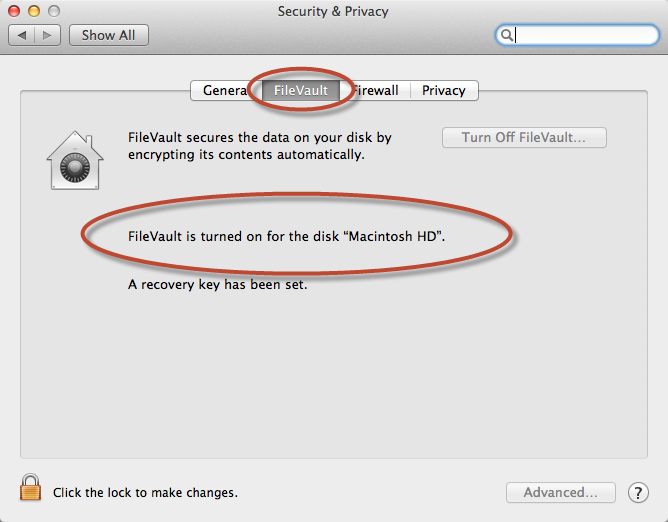
macOS / Mac OS X - DEE
1. Click on the Apple in the upper-left corner and go down to System Preferences.

2. Click on Dell Data Protection or Dell Encryption Enterprise.
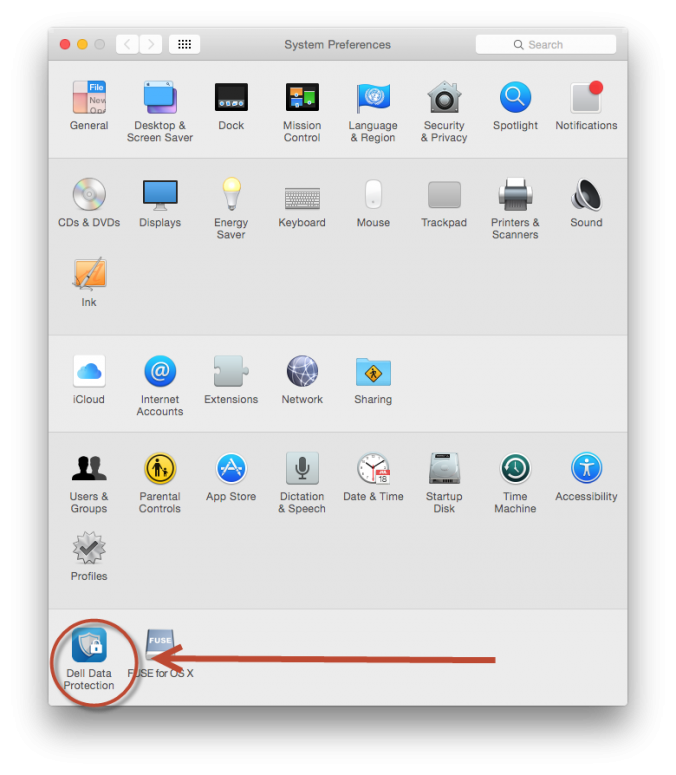
3. Select the System Volumes tab.
Your hard drive is encrypted if you see the following text: "Macintosh HD Encrypted".
Note: The name of your hard drive may vary from the "Macintosh HD" example shown here.
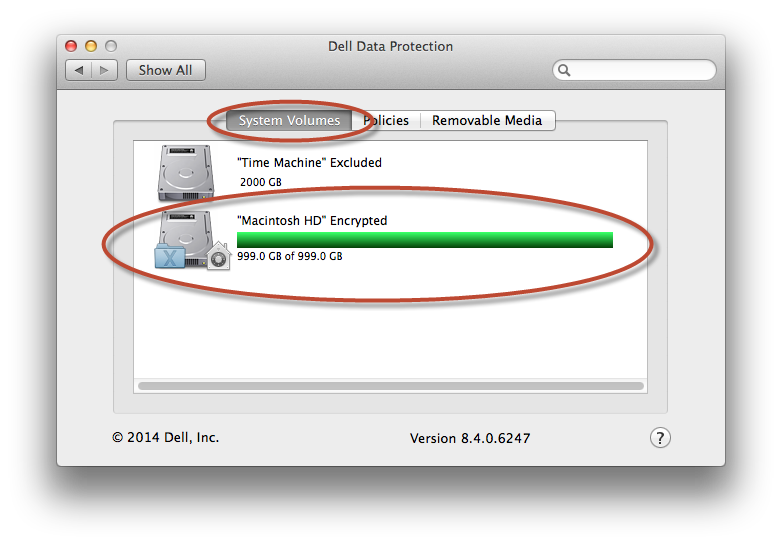
macOS / Mac OS X - PGP
Update as of 7/31/20, PGP Encryption is End of Life and no longer supported as an encryption method on UCSF Managed Devices or devices connecting to the UCSF network (BYOD). Please contact the UCSF Service Desk at 415-514-4100 if you require assistance encrypting your device with a supported encryption solution.
https://knowledge.broadcom.com/external/article/152880/end-of-life-information-for-symantec-enc.html
- Open your Applications folder and locate the Encryption Desktop application.
- Double-click on it to open it.
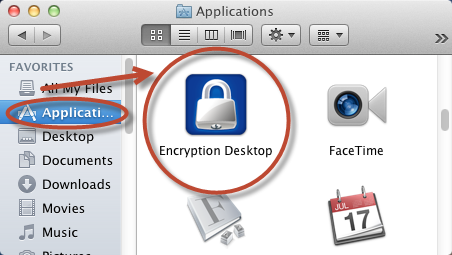
- On the left pane, select PGP Disk and the hard drive listed (in this example, the hard drive is VM Virtual SATA Hard Drive).
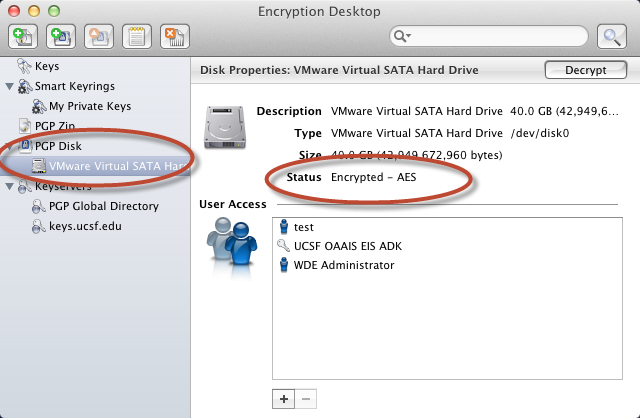
On the right, under Disk Properties, if you see the following text: Status: Encrypted - AES, then your hard drive is encrypted.
macOS / Mac OS X - PointSec
- Open your Applications folder and locate the Full Disk Encryption Management Console for Mac (FDEMC) application.
- Double-click on it to open it.
- Enter the user account name of the first user account that has administrator authority level in Full Disk Encryption and click OK.
-
Enter the user account name of the second user account that has administrator authority level in Full Disk Encryption, and click OK.
-
On the left pane, select Full Disk Encryption and Local.
Under Encryption status, if you see the text Volume Boot protection, then your hard drive is encrypted.
-
Click on Full Disk Encryption, then System Settings. Click on Mount Points and /. Click on a drive in the Mount Points folder to obtain information about how a drive is encrypted and the status of the encryption process. At the right-top, device encryption status and progress will show if the drive is encrypted.

